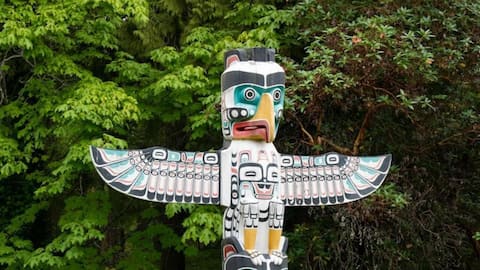Indigenous creativity: Exploring the rich tapestry of tribal art
What's the story
Tribal crafts have played a pivotal role in preserving cultural heritage and traditions for centuries. These unique art forms reflect the deep connection between indigenous communities and their environment, history, and spirituality. From intricate beadwork to vibrant textiles, the world is adorned with a diverse array of tribal crafts telling compelling stories of creativity and identity. Let us explore such crafts across the world.
Africa
Baga tribe's masks
Nimba masks stand out as remarkable African artifacts, particularly renowned for their grandeur. They symbolize the concept of fertility, employed by sterile women invoking Baga, the fertility goddess. Additionally, these masks played a vital role in first-fruit rituals, symbolically connecting female fertility with abundant grain harvest. Used in various celebratory events, nimba masks contribute to the cultural richness of birth, marriages, and harvest festivals.
Asia
Warli and Gonds, India
Warli art, hailing from Maharashtra's Warli tribe, employs monochromatic geometric shapes. The simplistic yet expressive style conveys a sense of unity and spirituality. Gond art, originating from Madhya Pradesh's Gond tribe, is characterized by intricate patterns, vibrant colors, and depictions of flora and fauna. Both art forms serve as cultural repositories, narrating the unique stories and traditions of their respective tribal communities.
North America
Hopi Kachina dolls
Hopi Kachina dolls, crafted by the Hopi tribe of Arizona, are intricately carved wooden figures representing spiritual beings or Kachinas. Each doll is a unique embodiment of a specific Kachina spirit, playing a vital role in Hopi religious and cultural traditions. All details of Hopi kachina dolls, including feather headdresses, objects held, and clothing, are intricately hand crafted rather than attached separately with glue.
Australia
Papunya art, Australia
The Papunya paintings represent a transformative chapter in the narrative of Aboriginal art, challenging preconceptions and offering a fresh perspective. Within these canvases, Papunya artists embarked on a journey of experimentation forming indigenous arts cooperatives called Papunya Tula. Today, Papunya Tula is a multimillion-dollar indigenous arts industry, continuing to preserve and celebrate the indiginious aboriginal art and the artistic prowess of the creators.
China
Li brocade, China
For over 3,000 years, brocade weaving has been a cornerstone of Li people's culture on China's Hainan Island. From unique garments, designs, and accessories reflecting their enduring cultural heritage, the work was designated as part of China's National Intangible Cultural Heritage in 2006 and subsequently listed as a UNESCO Intangible Cultural Heritage in Need of Urgent Safeguarding in 2009.
